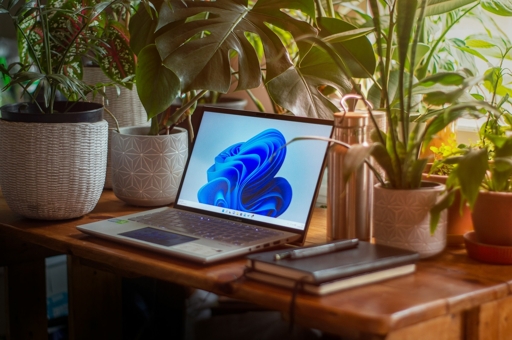“Are we being an asshole corporation that’s about to lose what little customer respect we still have?”
“No, it’s the users who feel entitled to be able to use their computer without signing up who are wrong.”
BASH killed the PowerShell star.
I killed windows with Linux
It’s pretty clear to me that Microsoft wants your PC to be just like your phone: closed-source vendor-only hardware and software with all user data cryptographically linked to your identity. Coupled with social media and internet mass surveillance, device level surveillance will fully enable the fascist takeover of the United States, and other countries. There are untold riches in selling your device-level actions to an authoritarian government so they can eliminate electoral opposition, and to advertisers who will advertise and capture insights at the OS level.
We have been building the surveillance state for decades, and now there is a federal power that is willing to use it not just extra-judicially, but against its own citizens to suppress their constitutional rights. ICE is already using this power to arrest and disappear lawful citizens without trial. Protesting in a city where the national guard is illegally deployed? Better not bring your phone or speak about it online or do anything on your phone relating to it, really. Hell, eventually you won’t be able to safely speak out loud anywhere even near a mobile phone. The Great Eye is ever watchful.
Imagine no more covert device interception, no more packet-level analysis from expensive secret rooms at your ISP, and no more digging through phone records and social media posts - just organized, searchable, chatbot queryable information updated hourly and purchased from Apple, Microsoft, and Google with your tax dollars about what you think, where you go, what you buy, what you do, and who you talk to every minute of every day, with an integrated secret police ready to arrest you at a moments notice of thought-crime or an attempt to exercise your rights. In the end, an AI agent will just tell them where to go and who to arrest. An authoritarian’s dream.
All the attention you’ve paid and all the work you’ve done preserving your privacy is about to come to fruition. And it still won’t be enough to save us.
Oh no… Anyway, anyone got a fix for dual audio on Linux Mint.
I wanna output to 2 devices (one is HDMI TV and the other is Bluetooth) at once and pipewire isn’t accommodating me. I’m hesitant to go screwing around with pulseaudio cause I tried that on a previous build and things went badly.
I managed to get an all devices audio output inserted into the pipewire.conf but the only sound that comes out is from the TV and not the bluetooth speaker.
I don’t really expect an answer here but if you could point me to the forum or instance that might have answers would be appreciated.
I used this page to do the code insert.
~~https://thecodeninja.net/2024/06/pipewire-combined-sink/~~ nevermind, the site seems to have 404’d itself in the last minute or so.
Check out qpwgraph: https://flathub.org/en/apps/org.rncbc.qpwgraph
It’s like Helvum but it can save patchbays and restore them on boot.
The easiest solution is to create a virtual audio device through your Pipewire config and then use qpwgraph to link them up to your physical device on boot.
I can copy my Pipewire virtual device config if you need it.
I have used this setup to separate game audio from voice audio when streaming for years.
Yeah, if you could post your setup that would be great. I think it would give me a better idea of how things work. Though, my goal is to consolidate sources to multiple outputs not to separate them.
my goal is to consolidate sources to multiple outputs not to separate them.
Works the same way, just in reverse.
Put the following in ~/.config/pipewire/pipewire.conf.d/10-virtual.conf
context.objects = [ { factory = adapter args = { factory.name = support.null-audio-sink node.name = "Virtual-Sink-1" node.description = "Virtual Sink 1" media.class = "Audio/Sink" audio.position = "FL,FR" } } ]If you need more than stereo, you can adjust it in audio.position. If you need multiple devices, just copy/paste the block between the
{}multiple times and rename the device.After that restart your system, you should now have a new audio device called
Virtual Sink 1, select it as default device.Start qpwgraph and connect the Virtual sink(s) to your output device(s) by dragging the monitor nodes to the playback nodes:

You can now try if everything sounds correctly. If it does, hit Ctrl + S in qpwgraph to save your patchbay somewhere. It will save all the connections you just made and establish them on start and on the fly if new devices are added.
Next up, add an autostart entry for qpwgraph. This depends on your desktop environment, add the
--minimizedflag so you don’t see the qpwgraph window every boot. You can also select “Start minimized to system tray” in “Graph” -> “Options”.If you only need certain applications to go to both devices, you can also achieve this without the virtual device by just dragging your application node directly to your bluetooth device in qpwgraph and saving the patchbay, it will route the audio automatically every time the application starts.
If outputting separate programs to separate outputs: install Pavucontrol (yes, for Pipewire); change outputs per-program in the first tab.
If trying to output the same stream(s) to both: install Helvum; drag lines around to connect to additional outputs.
Buy x86 hardware and install Linux on it.
What’s wrong with x64 hardware?
For many years I’ve had at least one Windows machine and at least one OSX machine (and then everything else runs linux). As MS started pushing this (and as Proton and Lutris got good enough to support almost any Windows software I would need to run, mostly games) I finally made the jump to zero Windows machines about a year and a half ago. Don’t miss it.







